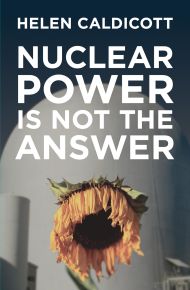 During the course of this week I plan to tackle each chapter of Dr. Caldicott’s book and battle the claims made against the nuclear industry. I can probably predict who’s going to win round one, as it is an issue we have beaten to death on this blog and others. But let’s see what I come up with before we declare a winner.
During the course of this week I plan to tackle each chapter of Dr. Caldicott’s book and battle the claims made against the nuclear industry. I can probably predict who’s going to win round one, as it is an issue we have beaten to death on this blog and others. But let’s see what I come up with before we declare a winner.Chapter 1 – The Energetic Costs of Nuclear Power
The first sentence of Chapter 1 starts with:
The Nuclear Energy Institute (NEI), the propaganda wing and trade group for the American nuclear industry, spends millions of dollars annually to engineer public opinion.Don’t we feel special? I guess we should take it as a compliment that we’re mentioned right off the bat because that means we’ve been doing our job of getting nuclear industry messages out to the public.
But according to the author, our clean-air messages are “fallacious and misleading.” If you can guess what the topic of the first chapter is, you’re probably right -- the lifecycle emissions of nuclear power. And the source of hers and every anti’s claims on this issue is none other then Jan Willem Storm van Leeuwen and Philip Smith.
Last year we began to tackle this issue and have since accumulated more and more data that conflict with the two authors' conclusions. Here’s a post from earlier this month that includes five sources analyzing nuclear’s lifecycle CO2 emissions. Unlike van Leeuwen and Smith, who only compare nuclear to gas, these sources compare nuclear’s results to other fuels, and they reach roughly the same conclusions. And I should note that three of these five sources are non-nuclear.
Just to give you some numbers in this post, van Leeuwen and Smith’s analysis concludes that nuclear emits (Caldicott, Chapter 1, p.6):
one-third as much CO2 emission as gas-fired electricity production. The rich uranium ores required to achieve this reduction are, however, so limited that if the entire present world electricity demand were to be provided by nuclear power, these ores would be exhausted within nine years. Use of the remaining poorer ores in nuclear reactors would produce more CO2 emission than burning fossil fuels directly.Two points: one is that the sources to which I reference conclude that nuclear’s lifecycle emissions are about 2 percent to 6 percent that of natural gas-fired plants, not 33 percent. And two, rich uranium ores are expected to be around in the “foreseeable future.” According to the World Nuclear Association, the UK Energy Review, the OECD’s “Red Book” and our own Dr. Clifton Farrell to name a few, there’s plenty of uranium to go around, to sustain a “nuclear renaissance” and then some.
Caldicott, Chapter 1, p.17:
With the knowledge about these topics that is now available, however, clearly the nuclear industry is running a public relations scam of massive proportions.I don’t think so. Numerous sources have been provided here to back up our claims contrary to the only source Dr. Caldicott cites. And our sources reach the same conclusion, independent of each other. Coincidence?
If she thinks we are running a PR scam, I would be curious to hear what she thinks about the Metrobuses in DC that say "This bus is running on clean natural gas."
Stay close for round two; it's on one of my favorite issues -- economics.
Technorati tags: Nuclear Energy, Nuclear Power, Electricity, Environment, Energy, Politics, Technology, Economics, Helen Caldicott
0 comments:
Post a Comment